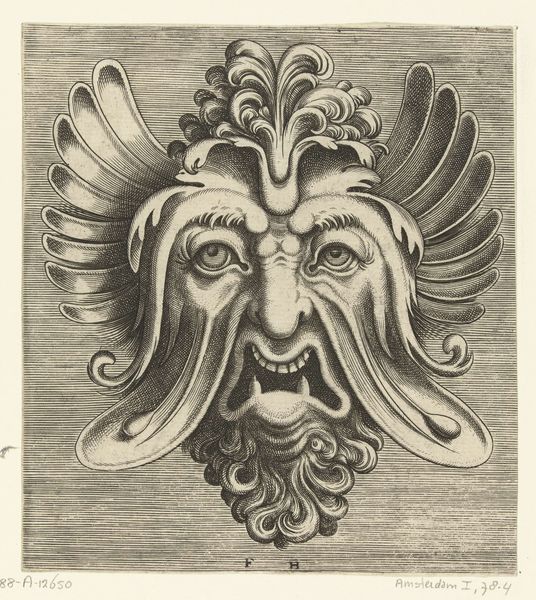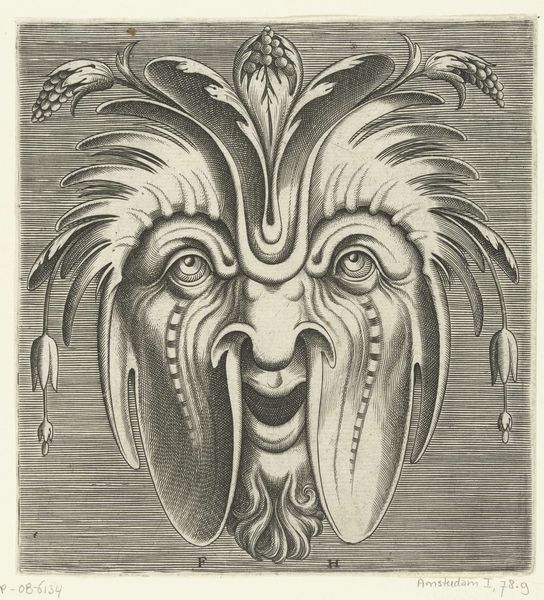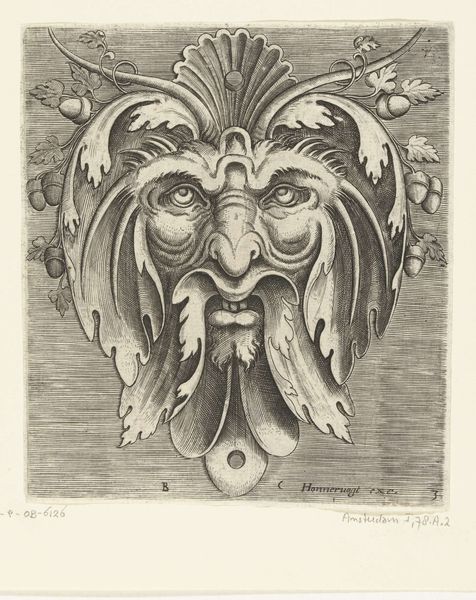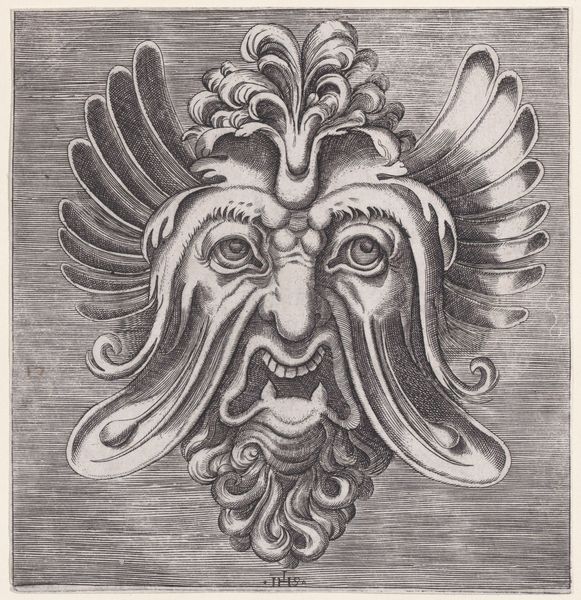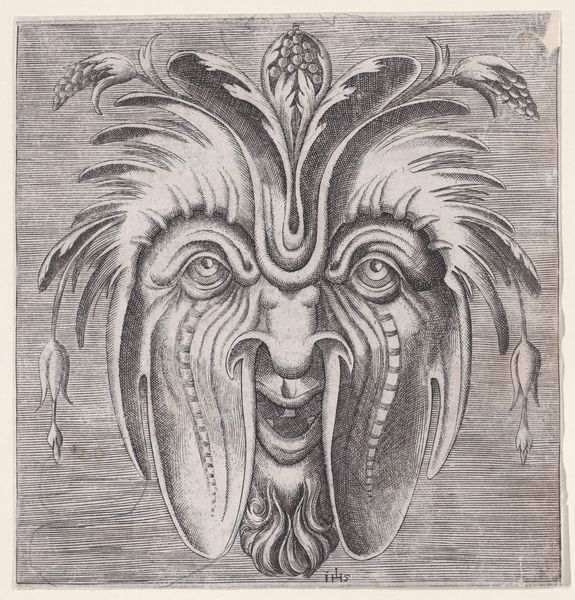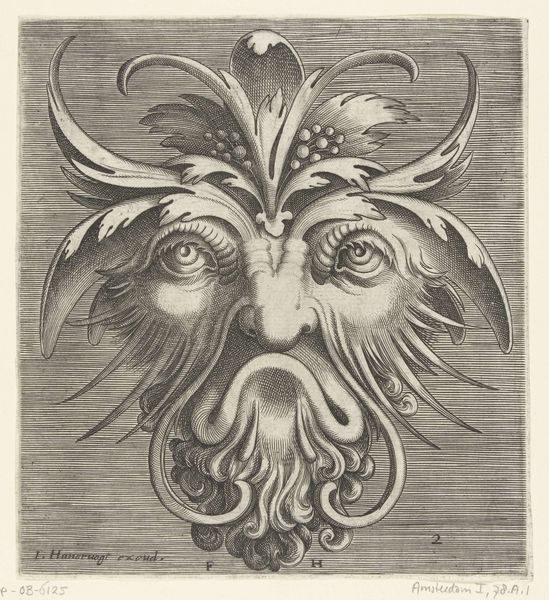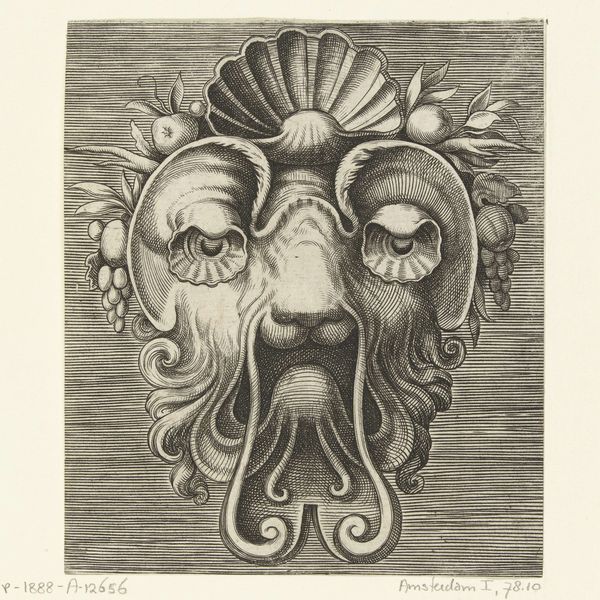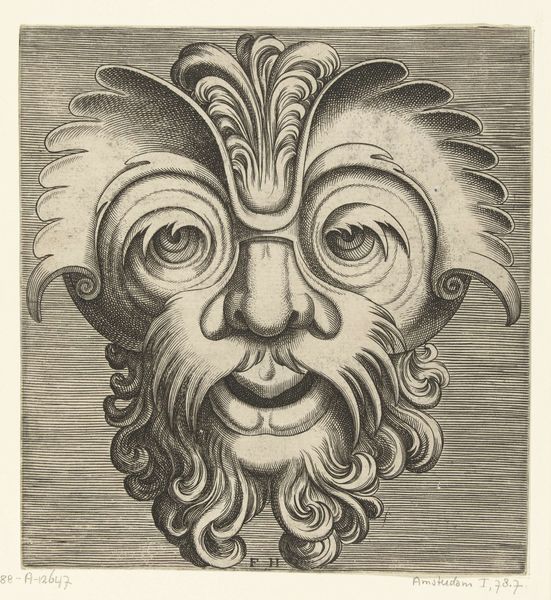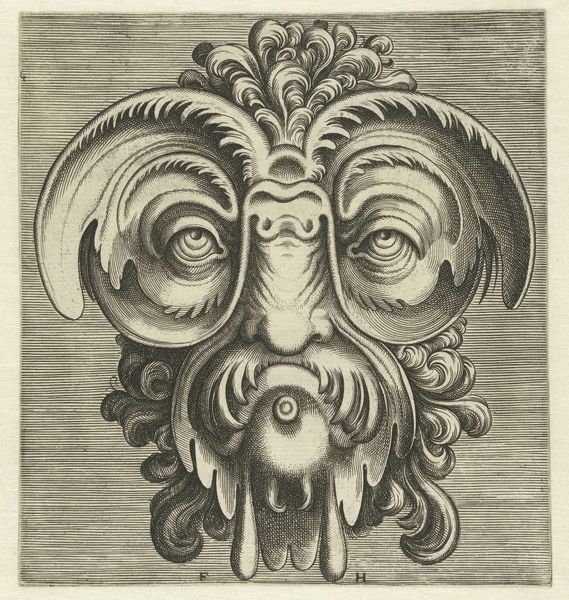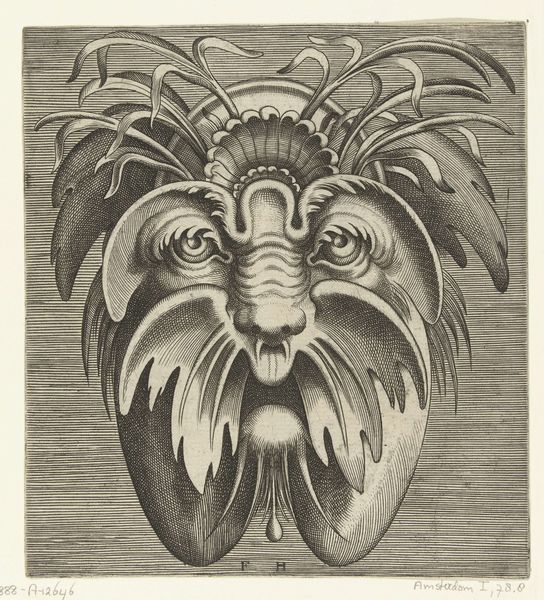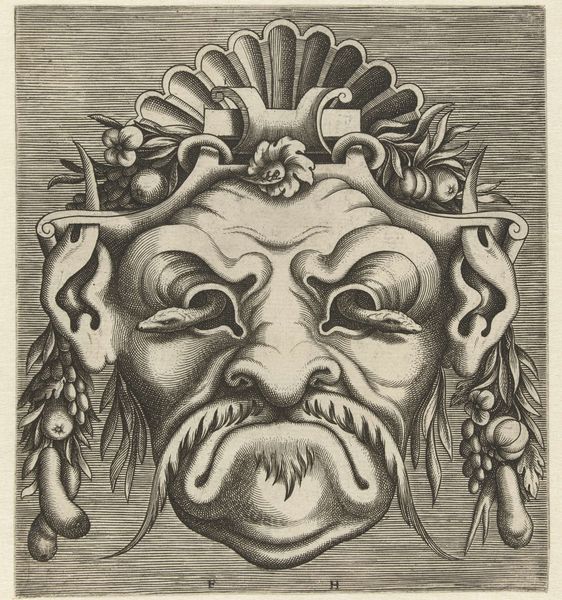
Masker met een openhangende, tandeloze mond, uitgezakte wangen en kuiven op het hoofd 1555
0:00
0:00
franshuys
Rijksmuseum
Dimensions: height 157 mm, width 145 mm
Copyright: Rijks Museum: Open Domain
This engraving by Frans Huys features a grotesque mask with an open, toothless mouth, sunken cheeks, and tufts on its head. The mask, a common motif in the 16th century, goes back to ancient theatrical traditions. It’s associated with revelry, disguise, and the blurring of identities. The gaping mouth, reminiscent of the ancient Greek theatrical masks, conveys a sense of raw emotion, be it laughter, anguish, or shock. Masks have appeared across cultures and eras, from the Dionysian festivals of ancient Greece to the Commedia dell'Arte, each time embodying a release of inhibitions. This mask reminds me of the works of Ensor, where the mask is a symbol of hidden identity and social criticism. The power of such images lies in their ability to tap into our collective subconscious, stirring primal emotions and reminding us of the cyclical nature of human expression. It is a dance between the conscious and unconscious.
Comments
No comments
Be the first to comment and join the conversation on the ultimate creative platform.
